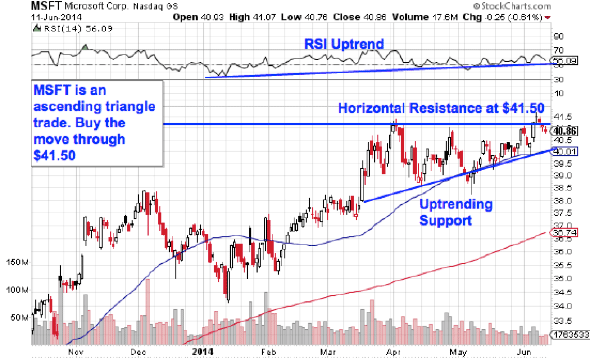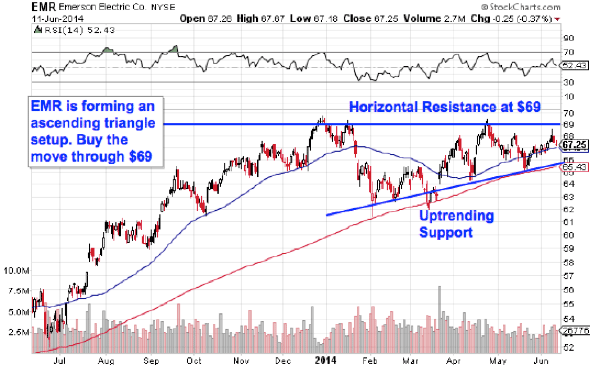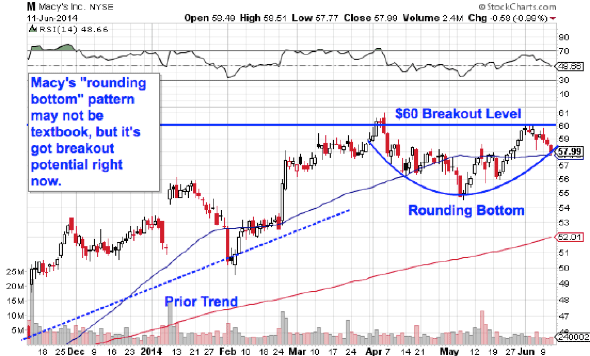This past week, eight of the Dow Jones Industrial Average's (DJINDICES: ^DJI ) 30 components reported earnings: McDonald's, DuPont (NYSE: DD ) , AT&T, Travelers (NYSE: TRV ) , United Technologies, Caterpillar (NYSE: CAT ) , Boeing, and 3M (NYSE: MMM ) .
In case you missed the releases, let's look at a four of them today and see how they performed during the second quarter of 2013. To learn about the other four, click here.
On Tuesday, DuPont and Travelers both reported results. DuPont was expected to report $10.04 billion in revenue and $1.27 per share in earnings, but it fell short at $9.8 billion and $1.11. The company earned $1.23 per share a year ago, so this was quite the miss. Management has discussed the option of selling or spinning off its chemical business but didn't give investors a time table for that move during the conference call. But despite the poor numbers, the stock managed to rise 0.91% this past week. �
Best Chemical Companies To Invest In 2015: Naturalnano Inc (NNAN)
NaturalNano, Inc. (NaturalNano), incorporated on February 18, 2000, is engaged in the development and commercialization of material science technologies with an emphasis on additives to polymers and other industrial and consumer products by taking advantage of technology advances developed in-house. During the year ended December 31, 2011,the Company�� activities are directed toward research, development, production and marketing of its technologies relating to the treatment and separation of nanotubes from halloysite clay and the development of related commercial applications for cosmetics, health and beauty products, and polymers, plastics and composites.
The company�� halloysite natural tube (HNT) products involve filling HNTs with active agents for use in the polymer composites, health and beauty, household product, and agrichemical industries. The filled tube product contains a material of interest within the tubes, such as an antimicrobial compound to provide antimicrobial properties to the resulting polymer composite material. The filled-tube products will focus on the utilization of the tubular nature of the halloysite nanotubes, by filling or adsorbing the tubes with active agents for the polymer nanocomposites, household products, cosmetics, agriculture, and pharmaceutical industries. The Company designs, manufactures and sells custom designed error prevention/safety checklist boards.
The Company competes with Air Products and Chemicals, BASF, Dow, E.I. DuPont de Nemours & Company, Applied Minerals, Davis International and Imagexpress.
Advisors' Opinion: - [By Peter Graham]
Small cap stocks Naturalnano Inc (OTCMKTS: NNAN), Global Payout, Inc (OTCMKTS: GOHE) and Blue Water Global Group Inc (OTCBB: BLUU) were either jumping higher or diving lower yesterday. To complicate matters for investors, two of these small cap stocks have been subjects of disclosures about paid promotion or investor relation campaigns. So what will these three small caps do for the rest of this week? Here is a closer look to help you decide on a trading or investing strategy:
Best Chemical Companies To Invest In 2015: Uralkaliy OAO (URALL.PK)
Uralkaliy OAO (Uralkali OJSC) is a Russia-based company, which is engaged in the chemical industry. The Company specializes in the production of potash fertilizers. Its product portfolio comprises pink muriate of potash (PMOP), white muriate of potash (WMOP) and granular (GMOP). The Company is active through representative offices, located in Moscow and Beijing, as well as numerous subsidiaries, located countrywide and in Panama, Belarus, Singapore, Brazil and others. Uralkaliy OAO operates on the potassium and magnesium deposits located in Berezniki, Perm and Saint Petersburg. Its production assets include seven plants and five mines. Uralkaliy OAO sells its products domestically, as well as abroad in over 40 countries, including the United States, China, Brazil, India and South-East Asia, among others.
Advisors' Opinion: - [By Tim Gallagher]
The potash spat continues to get uglier, as Belarus investigators reportedly intend to seize property and assets of Russia's Uralkali (URALL.PK) following the collapse of the joint Russian-Belarussian potash venture.
- [By Chris Damas]
This morning Russian potash giant OJSC Uralkali (URALL.PK) presented first half 2013 financial and operating results and more importantly, much anticipated comments on the strategy of the company and the state of the international potash industry, the latter blind-sided by the leading potash company's split with marketing partner JSC Belaruskali of Belarus.
5 Best Construction Material Stocks To Own For 2015: Cabot Corp (CBT)
Cabot Corporation (Cabot), incorporated in 1960, is a global specialty chemicals and performance materials company. The Company�� principal products are rubber and specialty grade carbon blacks, fumed metal oxides, inkjet colorants, aerogels and cesium formate drilling fluids. Cabot and its affiliates have manufacturing facilities and operations in the United States and approximately 20 other countries. The Company operates in four business segments: the Core Segment, the Performance Segment, the New Business Segment and the Specialty Fluids Segment. It is organized into three geographic regions: The Americas; Europe, Middle East and Africa, and Asia Pacific. On January 23, 2012, the Company sold its Supermetals Business to Global Advanced Metals Pty Ltd. On August 1, 2012, it acquired Norit.
Core Segment
Carbon black is a form of elemental carbon that is manufactured in a highly controlled process to produce particles and aggregates of varied structure and surface chemistry, resulting in many different performance characteristics for a variety of applications. Its rubber blacks products are used in tires and industrial products. The Company owns, or has a controlling interest in, and operates plants that produce rubber blacks in Argentina, Brazil, Canada, China, Colombia, the Czech Republic, France, Indonesia, Italy, Japan, Malaysia, The Netherlands and the United States.
Performance Segment
The Performance Segment consists of two product lines: specialty grades of carbon black and thermoplastic concentrates; and fumed silica, fumed alumina and dispersions thereof. In each product line, it designs, manufactures and sells materials that deliver performance in a range of customer applications across the automotive, construction and infrastructure, and electronics and consumer products sectors. In addition, Cabot manufactures and sources thermoplastic concentrates and compounds that are marketed to the plastics industry. The Company owns, or has a ! controlling interest in, and operates plants that produce specialty grades of carbon black in China, The Netherlands and the United States. Its products are produced in facilities that it owns, or has a controlling interest in, located in Belgium, China and the United Arab Emirates. The Company also owns, or has a controlling interest in, manufacturing plants that produce fumed metal oxides in the United States, China, the United Kingdom and Germany. During the fiscal year ended September 30, 2011 (fiscal 2011), it closed its masterbatch manufacturing facility in Grigno, Italy.
New Business Segment
The Company�� New Business Segment consists of the Inkjet Colorants, Aerogel, Cabot Superior MicroPowders and Cabot Elastomer Composites Businesses. During fiscal 2011, its Cabot Elastomer Composites Business became part of its New Business Segment. The Company produces and sells aqueous inkjet colorants primarily to the inkjet printing market. Its inkjet colorants are produced for various inkjet printing applications, including small office and home office, corporate office, and commercial and industrial printing, as well as for other applications. Its inkjet colorants are manufactured at its facility in Haverhill, Massachusetts.
Cabot�� aerogel is a hydrophobic, silica-based particle with a high surface area that is used in a variety of thermal insulation and specialty chemical applications. In the construction industry, the product is used in insulative composite building products and translucent skylight, window, wall and roof systems for insulating eco-daylighting applications. In the oil and gas industry, aerogel is used to insulate subsea pipelines. In the specialty chemicals industry, the product is used to provide matte finishing, insulating and thickening properties for use in a variety of applications. It manufactures its aerogel products at its facility in Frankfurt, Germany.
The Company manufactures its aerogel products at its facility in F! rankfurt,! Germany. Finished products for use in the oil and gas industry are fabricated at a facility in Billerica, Massachusetts. The principal area of commercial focus for Cabot Superior MicroPowders Business (CSMP) is in developing covert taggants for a range of anti-counterfeiting security applications. Development and manufacturing activities are conducted primarily at its facilities in Albuquerque, New Mexico and Mountain View, California. In addition to the carbon black the Company makes using conventional carbon black manufacturing methods, it has developed elastomer composite products that are compounds of natural latex rubber and carbon black made by a liquid phase process. Its Cabot Elastomer Composites Business (CEC) products are targeted for tire, defense, mining, automotive and aerospace applications. It manufactures CEC products at its facility in Port Dickson, Malaysia.
Specialty Fluids Segment
The Company�� Specialty Fluids Segment produces and markets cesium formate as a drilling and completion fluid for use primarily in high pressure and high temperature oil and gas well construction. It has a mine and a cesium formate manufacturing facility in Manitoba, Canada, as well as fluid blending and reclamation facilities in Aberdeen, Scotland and in Bergen and Kristiansund, Norway.
The Company competes with Aspen Aerogel, Inc.
Advisors' Opinion: - [By Eric Volkman]
Cabot (NYSE: CBT ) has elected not to shift its dividend policy for the time being. The company declared its latest common stock distribution, which is to be $0.20 per share paid on September 13 to shareholders of record as of August 30.�That amount matches each of the firm's previous five distributions, the most recent of which was handed out in the middle of last month. Prior to that, Cabot paid $0.18 per share.
- [By Victor Selva]
The company has a current ratio of 17.8% which is higher than the industry mean of 6.55%. Also, it's higher than the one registered by Akzo Nobel NV (AKZOY), Cabot Corporation (CBT) and Olin Corporation (OLN). For investors looking for a higher ROE, PPG Industries Inc. (PPG) could be the option.
Best Chemical Companies To Invest In 2015: AZ Electronic Materials SA (AZEM)
AZ Electronic Materials SA is a producer and supplier of specialty chemical materials. AZ operates in four segments: IC Materials, which includes products for use in integrated circuits and devices; Optronics, which includes products used in the production of flat panel displays for use in televisions, computer monitors and similar equipment and light emitting diode technology; Printing and Other, which includes printing and similar products used in photo lithographic processes, and Corporate. The Company�� products enable the manufacture of integrated circuits (ICs) and flat panel displays (FPDs) that are integral to a range of electronic devices and applications, including computers and tablet devices, flat screen televisions, mobile communication devices, industrial and automotive applications and the developing light and energy markets.
Advisors' Opinion: - [By Corinne Gretler]
AZ Electronic (AZEM) surged 43 percent, the most since its at least November 2010, after Merck on Dec. 5 said it had agreed to buy the company for about 1.6 billion pounds. Merck added 0.4 percent. Shareholders will get 403.5 pence for each share, Merck said. The price is 53 percent above the Dec. 4 closing level in London trading.
Best Chemical Companies To Invest In 2015: ICL Israel Chemicals Ltd (ISCHY.PK)
ICL Israel Chemicals Ltd (ICL) is an Israel-based company, engaged in the fertilizer and specialty chemical sectors. The company operates in three segments: Fertilizers, Industrial Products, and Performance Products. The Fertilizers segment is engaged in the production of standard, granular, fine red and white potash from three sources, as well as in the production of phosphates, such as phosphate rock, phosphoric acid, fertilizers and animal feed addictives. The Industrial Products segment produces flame retardants, such as brominates and organ phosphorus; elemental bromine, and other chemicals. In addition the Performance Products segment produces specialty phosphates, such as technical, food grade and electronic grade phosphoric acid, phosphate salts, food additives and wildfire safety products, as well as alumina and other chemicals.
Advisors' Opinion: - [By Chris Damas]
I never thought Uralkali would get back together with Belaruskali as I expressed in this article written a day after the break-up roiled the fertilizer world, causing 20% plunges in the stocks of major producers such as Potash Corp (POT), Mosaic Company (MOS) and Israel Chemicals Ltd (ISCHY.PK).
 GM's original whistleblower speaks out NEW YORK (CNNMoney) A corporate culture that stopped acknowledging problems is why General Motors is in its current predicament, according to a former quality manager for the automaker.
GM's original whistleblower speaks out NEW YORK (CNNMoney) A corporate culture that stopped acknowledging problems is why General Motors is in its current predicament, according to a former quality manager for the automaker. 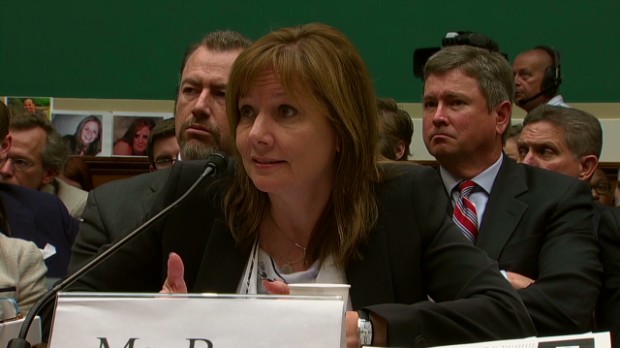 Lawmakers grill GM's Barra in D.C.
Lawmakers grill GM's Barra in D.C.  IRS Commissioner John Koskinen Bloomberg News
IRS Commissioner John Koskinen Bloomberg News 












 Tony Dejak/AP WASHINGTON -- Sales of new U.S. single-family homes fell more than expected and hit a five-month low in February, pointing to continued weakness in the housing market. The Commerce Department said Tuesday that sales fell 3.3 percent to a seasonally adjusted annual rate of 440,000 units, the lowest level since last September. January's sales were revised down to a 455,000-unit pace from the previously reported 468,000-unit rate. Economists polled by Reuters had forecast new home sales at a 445,000-unit pace in February. New home sales fell 1.1 percent compared with February 2013. Last month's drop brought new home sales in line with other data such as home resales and building activity that have offered a downbeat picture of the housing market. Some of the housing slowdown has been blamed on an unusually cold and snowy winter. But the sector, the main channel through which the Federal Reserve has sought to stimulate the economy via monthly bond purchases, lost momentum last summer following a run-up in mortgage rates. A dwindling supply of homes for sale and soaring house prices have also weighed. But a recovery is expected later this year as household formation accelerates after abruptly slowing in 2013. Last month, sales in the Northeast tumbled 32.4 percent, the biggest decline since October 2012, indicating severe weather continued to hurt activity. Sales fell 1.5 percent in the South, which experienced harsh weather. They surged 36.7 percent in the Midwest, but fell 15.9 percent in the West. Though the supply of new houses on the market hit the highest level since December 2010, inventory remains low. At February's sales pace it would take 5.2 months to clear the supply of houses on the market. That was up from 5 months in January and the most since last September. A supply of 6 months is normally considered a healthy balance between supply and demand. The median price of a new home last month fell 1.2 percent from February 2013. It was the biggest drop since June 2012.
Tony Dejak/AP WASHINGTON -- Sales of new U.S. single-family homes fell more than expected and hit a five-month low in February, pointing to continued weakness in the housing market. The Commerce Department said Tuesday that sales fell 3.3 percent to a seasonally adjusted annual rate of 440,000 units, the lowest level since last September. January's sales were revised down to a 455,000-unit pace from the previously reported 468,000-unit rate. Economists polled by Reuters had forecast new home sales at a 445,000-unit pace in February. New home sales fell 1.1 percent compared with February 2013. Last month's drop brought new home sales in line with other data such as home resales and building activity that have offered a downbeat picture of the housing market. Some of the housing slowdown has been blamed on an unusually cold and snowy winter. But the sector, the main channel through which the Federal Reserve has sought to stimulate the economy via monthly bond purchases, lost momentum last summer following a run-up in mortgage rates. A dwindling supply of homes for sale and soaring house prices have also weighed. But a recovery is expected later this year as household formation accelerates after abruptly slowing in 2013. Last month, sales in the Northeast tumbled 32.4 percent, the biggest decline since October 2012, indicating severe weather continued to hurt activity. Sales fell 1.5 percent in the South, which experienced harsh weather. They surged 36.7 percent in the Midwest, but fell 15.9 percent in the West. Though the supply of new houses on the market hit the highest level since December 2010, inventory remains low. At February's sales pace it would take 5.2 months to clear the supply of houses on the market. That was up from 5 months in January and the most since last September. A supply of 6 months is normally considered a healthy balance between supply and demand. The median price of a new home last month fell 1.2 percent from February 2013. It was the biggest drop since June 2012.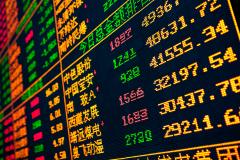 Related BZSUM Mid-Morning Market Update: Markets Edge Higher; Lennar Earnings Beat Street View #PreMarket Primer: Thursday, March 20: Fed Surprises With Talk Of Tightening Sooner Than Expected
Related BZSUM Mid-Morning Market Update: Markets Edge Higher; Lennar Earnings Beat Street View #PreMarket Primer: Thursday, March 20: Fed Surprises With Talk Of Tightening Sooner Than Expected 


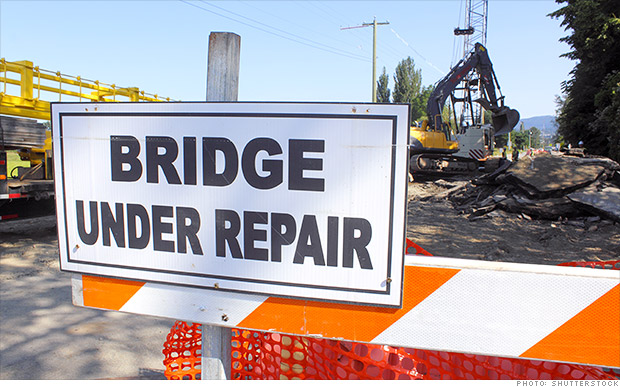 Every day, 210 million trips are made across deficient bridges in the largest metropolitan areas, according to civil engineers. Unless Congress acts, federal funding for bridge and road repair will soon run short. NEW YORK (CNNMoney) Gridlock on Capitol Hill may mean more gridlock for you over the next year if you have to navigate potholes, congested roads, rundown rails or bad bridges.
Every day, 210 million trips are made across deficient bridges in the largest metropolitan areas, according to civil engineers. Unless Congress acts, federal funding for bridge and road repair will soon run short. NEW YORK (CNNMoney) Gridlock on Capitol Hill may mean more gridlock for you over the next year if you have to navigate potholes, congested roads, rundown rails or bad bridges.  Wendy's is hoping to recapture the magic of the pretzel bun this summer. NEW YORK (CNNMoney) Pretzel lovers rejoice!
Wendy's is hoping to recapture the magic of the pretzel bun this summer. NEW YORK (CNNMoney) Pretzel lovers rejoice!  McDonald's messes with its dollar menu
McDonald's messes with its dollar menu 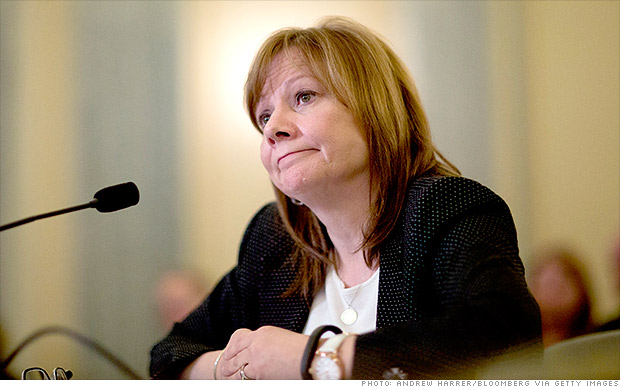 GM CEO Mary Barra testifying before Congress in April. NEW YORK (CNNMoney) GM CEO Mary Barra will be back on Capitol Hill Wednesday, vowing again to take any steps necessary to avoid a repeat of the automaker's recall crisis, according to prepared remarks.
GM CEO Mary Barra testifying before Congress in April. NEW YORK (CNNMoney) GM CEO Mary Barra will be back on Capitol Hill Wednesday, vowing again to take any steps necessary to avoid a repeat of the automaker's recall crisis, according to prepared remarks.  Two families, one fight against GM
Two families, one fight against GM 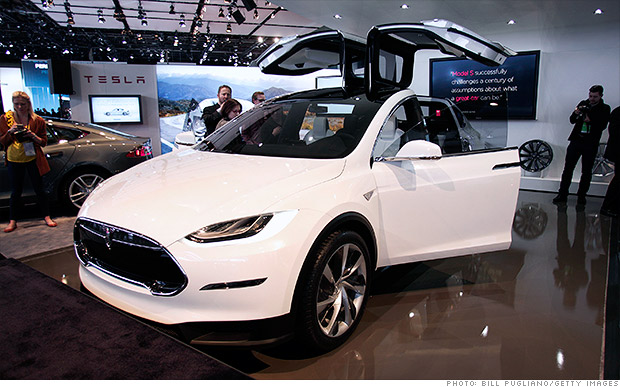 Tesla will start deliveries of the Model X to its customers early next year. NEW YORK (CNNMoney) Tesla Motors says it should start deliveries of its long awaited Model X crossover vehicle early next year.
Tesla will start deliveries of the Model X to its customers early next year. NEW YORK (CNNMoney) Tesla Motors says it should start deliveries of its long awaited Model X crossover vehicle early next year.  Musk on Tesla's UK expansion, stock price
Musk on Tesla's UK expansion, stock price 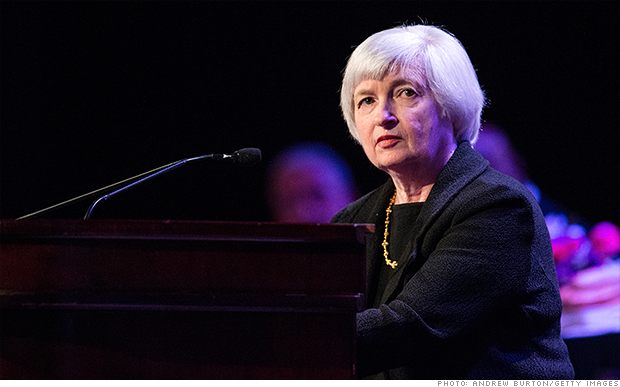 NEW YORK (CNNMoney) The biggest thing on investors' minds lately are interest rates, and this week offers a peek into where they're heading.
NEW YORK (CNNMoney) The biggest thing on investors' minds lately are interest rates, and this week offers a peek into where they're heading. 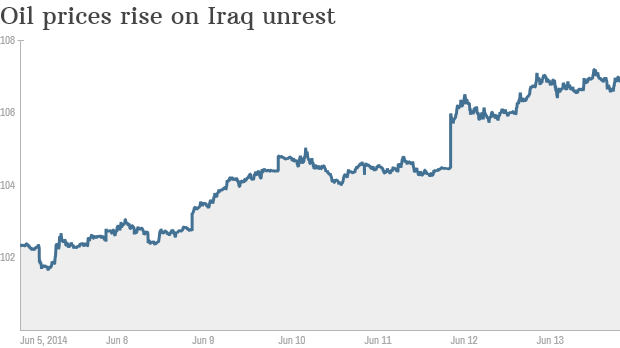

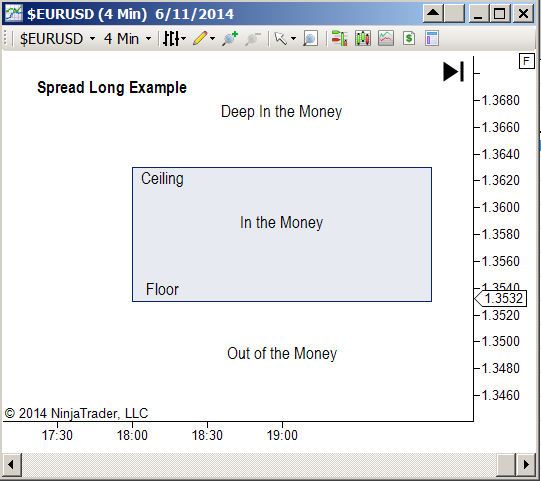
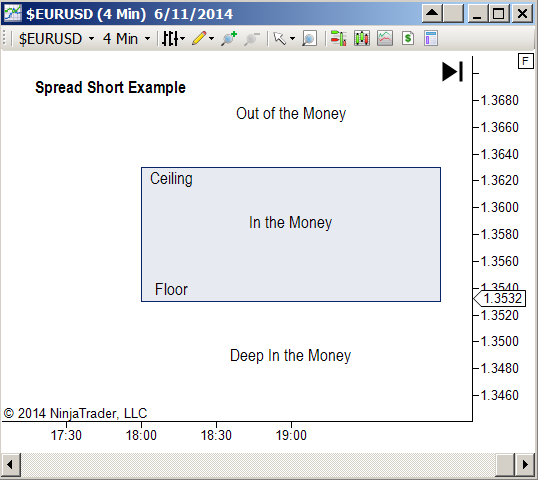



 ) announced its Q1 results, posting higher net sales while comparable store sales declined.
) announced its Q1 results, posting higher net sales while comparable store sales declined. Jim R. Bounds/Bloomberg via Getty Images DETROIT -- Ignition switches once again are causing problems for General Motors. This time the company is recalling nearly 512,000 Chevrolet Camaro muscle cars from the 2010 to 2014 model years because a driver's knee can bump the key and knock the switch out of the "run" position, causing an engine stall. That disables the power steering and brakes and could cause drivers to lose control. GM (GM) said Friday that it knows of three crashes and four minor injuries from the problem. A spokesman said the air bags didn't go off in the crashes, but GM hasn't determined if the nondeployment was caused by the switches. GM said the Camaro switches met its specifications -- unlike those at the center of a recall of 2.6 million small cars. That problem has caused more than 50 crashes and at least 13 deaths. Company spokesman Alan Adler said the problem occurs rarely and affects mainly drivers who are tall and sit close to the steering column so their knees can come in contact with the key. The Camaro switches are completely different from those in the small cars with ignition switch problems. The Camaro switches, he said, were designed by a different person, and meet GM standards for the amount of force needed to turn the cars on and off. Currently the Camaro key is concealed in the fob like a switchblade. GM will replace it with a standard key, and a separate fob attached by a ring so it will dangle from the key. Adler said with the change, if the driver's knee hits the fob, it doesn't come in contact with the key. "You can hit the key fob all day long and it's not going to have any impact on the ignition," he said. The problem was discovered during internal testing of ignition switches after the company recalled the switches in small cars such as the Chevrolet Cobalt and Saturn Ion earlier this year, GM said. GM knew for more than a decade that the small-car switches were faulty, yet didn't recall them until early this year. The problem has brought federal investigations, lawsuits and a $35 million fine from the National Highway Traffic Safety Administration. GM also announced three other recalls Friday, bringing the total number of vehicles recalled by the company to about 14.4 million in the U.S. and 16.5 million in North America. Earlier this year GM passed its old U.S. full-year recall record of 10.75 million vehicles set in 2004.
Jim R. Bounds/Bloomberg via Getty Images DETROIT -- Ignition switches once again are causing problems for General Motors. This time the company is recalling nearly 512,000 Chevrolet Camaro muscle cars from the 2010 to 2014 model years because a driver's knee can bump the key and knock the switch out of the "run" position, causing an engine stall. That disables the power steering and brakes and could cause drivers to lose control. GM (GM) said Friday that it knows of three crashes and four minor injuries from the problem. A spokesman said the air bags didn't go off in the crashes, but GM hasn't determined if the nondeployment was caused by the switches. GM said the Camaro switches met its specifications -- unlike those at the center of a recall of 2.6 million small cars. That problem has caused more than 50 crashes and at least 13 deaths. Company spokesman Alan Adler said the problem occurs rarely and affects mainly drivers who are tall and sit close to the steering column so their knees can come in contact with the key. The Camaro switches are completely different from those in the small cars with ignition switch problems. The Camaro switches, he said, were designed by a different person, and meet GM standards for the amount of force needed to turn the cars on and off. Currently the Camaro key is concealed in the fob like a switchblade. GM will replace it with a standard key, and a separate fob attached by a ring so it will dangle from the key. Adler said with the change, if the driver's knee hits the fob, it doesn't come in contact with the key. "You can hit the key fob all day long and it's not going to have any impact on the ignition," he said. The problem was discovered during internal testing of ignition switches after the company recalled the switches in small cars such as the Chevrolet Cobalt and Saturn Ion earlier this year, GM said. GM knew for more than a decade that the small-car switches were faulty, yet didn't recall them until early this year. The problem has brought federal investigations, lawsuits and a $35 million fine from the National Highway Traffic Safety Administration. GM also announced three other recalls Friday, bringing the total number of vehicles recalled by the company to about 14.4 million in the U.S. and 16.5 million in North America. Earlier this year GM passed its old U.S. full-year recall record of 10.75 million vehicles set in 2004. Canadian firm Amaya is buying the company that operates PokerStars. LONDON (CNNMoney) A Canadian gambling-services company is going 'all in,' paying $4.9 billion to buy the firm behind the popular PokerStars gambling website.
Canadian firm Amaya is buying the company that operates PokerStars. LONDON (CNNMoney) A Canadian gambling-services company is going 'all in,' paying $4.9 billion to buy the firm behind the popular PokerStars gambling website. 